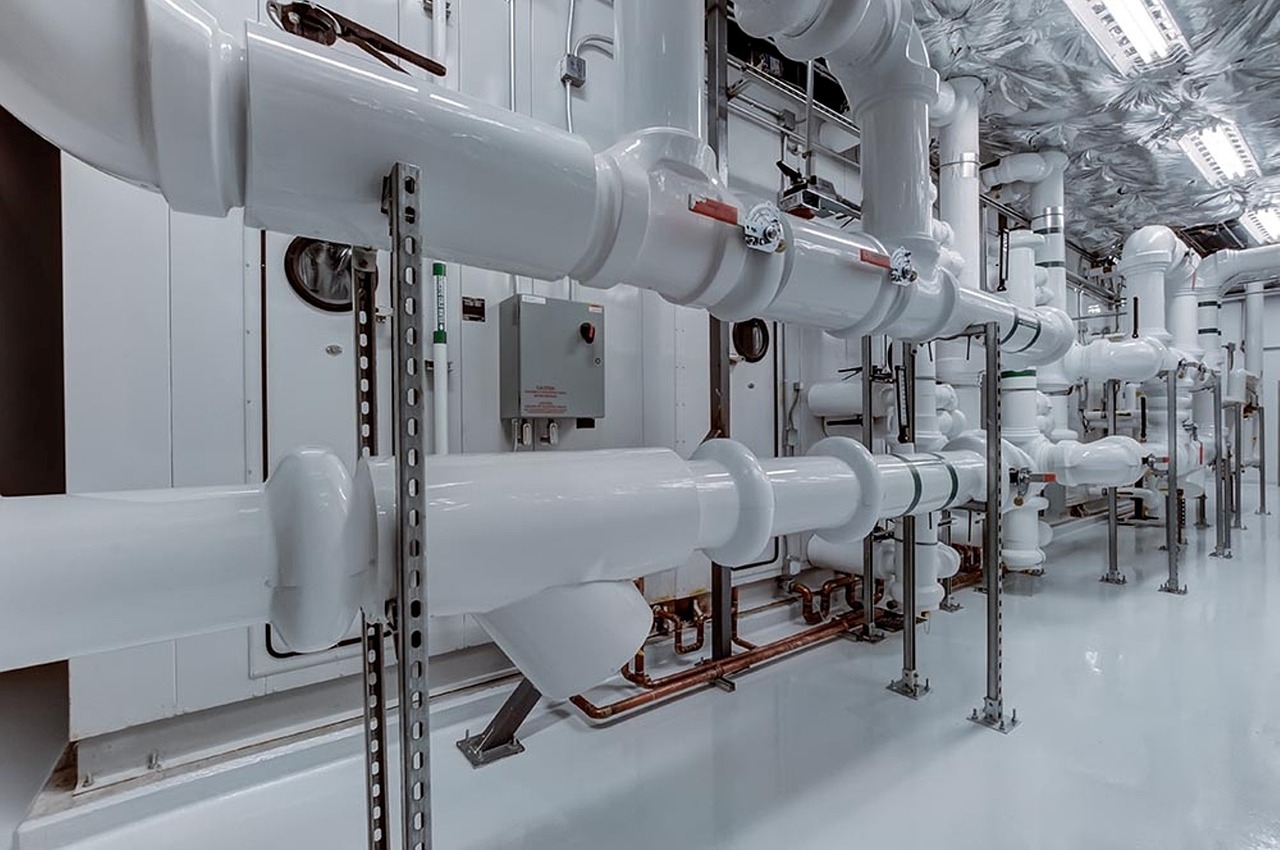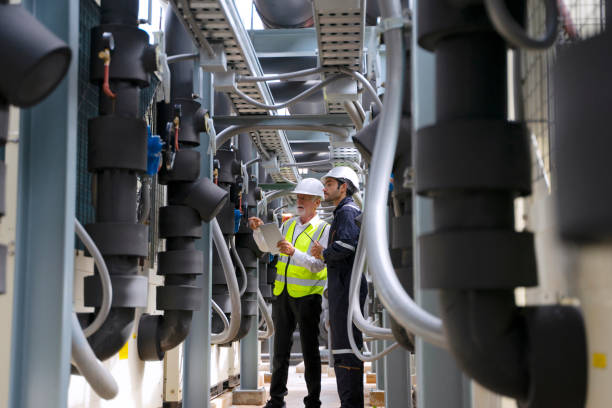This article clarifies the DIN EN 1717 water supply protection requirements and help you clarify this crucial legislation and its implications for water system safety. Join us as we explain major components to help you make water quality and protection choices.
The definition of DIN EN 1717
Deutsches Institut für Normung and European norm 1717 protect water supply against pollution. It mandates water system backflow, backsiphonage, and cross-connection prevention. The standard ensures drinking water safety and purity.
Why water supply protection matters
Water supply protection is essential for public health and clean drinking water. DIN EN 1717 protects the water supply system against pollution.
Contamination prevention – Water contamination can harm health. Deutsches Institut für Normung and European norms prevent pollutants, chemicals, and other harmful substances from entering the water system. This shields customers from health hazards.
Drinking water safety – It ensures safe drinking water, a basic human necessity. The standard protects tap water from contaminants, giving customers peace of mind.
Securing clean water from emergency showers – clean water from emergency showers is essential for workplace safety. By following the norm, companies can ensure that the water flow is clean and working without problems.
Understanding terms
To understand DIN EN 1717, you must know its nomenclature.
- DIN, or Deutsches Institut für Normung, is the German Institute for Standardization. DIN develops technical standards for different sectors, including water supply protection.
- European Norm (EN) refers to standards created by the European Committee for Standardization (CEN). DIN EN standards promote EU-wide consistency by collaborating with other European nations.
- The number 1717 refers to Deutsches Institut für Normung and European norm. This number differentiates the standard and makes it easier to reference.
DIN EN 1717 scope
The Deutsches Institut für Normung and European norms address several water supply protection concerns. Properly applying the standard requires understanding its breadth.
Application – All public drinking water network water delivery systems must comply with it. This comprises residential, commercial, industrial, hospital, school, and restaurant buildings. The standard protects these systems’ water supply.
It applies to whom? It pertains to water supply system design, installation, and maintenance stakeholders. This comprises architects, engineers, plumbers, and building owners. Following the standard guarantees that all parties preserve the water supply.
Equipment and component requirements – It covers water supply equipment and component standards. Backflow preventers, air gaps, and other safety measures These regulations reduce contamination and cross-connections.

Designer considerations
The Deutsches Institut für Normung and European norms require numerous considerations when developing water supply systems.
Protection against backflow – Backflow, which reverses water flow, can contaminate. It stresses the need for backflow prevention to ensure water flows properly.
Stopping backsiphonage – Backsiphonage occurs when negative pressure draws polluted water into the potable water supply. It recommends equipment and design to avoid backsiphonage.
Cross-connection avoidance – Cross-connections allow contaminated water to enter the public water supply. It requires cross-connection prevention to protect drinking water by ensuring the water remains free from contamination.
Conformity and certification for 1717
Effective water supply protection requires Deutsches Institut für Normung and European norm 1717 compliance. Compliance verification and customer assurance depend on certification organizations and testing methods.
Certification bodies – Independent certification agencies evaluate and certify items, systems, and processes. Certification organizations check backflow prevention devices and other equipment for DIN EN 1717 compliance.
Testing and Approval – The testing and approval process comprises rigorous testing of goods, systems, and processes to ensure its conformity. These tests assess pressure resistance, flow rates, and backflow prevention. These tests are required for product certification.
Possible issues and challenges
Deutsches Institut für Normung and Europian norm 1717 is an essential water supply protection standards, although stakeholders may experience obstacles during implementation.
Missing awareness – Water supply system designers and managers may be unaware of the situation. Education, understanding, and its standards are essential for successful implementation.
Cost and implementation issues – The equipment, safety gear and actions needed to comply with Deutsches Institut für Normung and European norm may be costly and complicated. Space constraints, retrofitting systems, and stakeholder coordination can be difficult. The long-term benefits of water supply protection surpass these early hurdles.
Main differences other standards vs DIN EN 1717
Deutsches Institut für Normung and European Norm protect water supplies; however, other standards overlap. To comply with it, you must grasp its main distinctions from other standards.
Several important differences distinguish it, a European standard that defines drinking water installation contamination prevention procedures. Central to its differentiation is European application. DIN EN aims to standardize EU water quality protection methods. A regional focus enables a uniform approach to drinking water protection across Europe.
Another distinction is its holistic approach. It addresses backflow prevention, fluid category classifications, and water installation protection for several contamination sources. This comprehensive approach addresses all drinking water quality problems.
DIN EN 1717 also stresses risk assessments and flexible category classification, unlike other standards. This categorization method determines application protection levels, optimizing resource allocation. In addition, it references other European standards and regulations, establishing a unified drinking water safety regulatory framework. This connection reduces disputes and assures compliance consistency. This is essential for ensuring the quality and safety of drinking water systems across the EU due to its European orientation, broad coverage, risk assessment focus, and alignment with other important standards.

Best practices for water supply protection
Water supply protection requires excellent practices. These procedures were supported by DIN EN 1717 and assured water safety and purity.
Regular checks and maintenance – To detect and fix problems quickly, the water supply system needs regular inspections and maintenance. This involves testing backflow protection devices, air gaps, and other safety precautions. Timely maintenance reduces pollution and extends system life.
Education and training – Upholding ‘Deutsches Institut für Normung and European norm’ requires proper education and training of water supply personnel. Training people to safeguard water supplies reduces mistakes and non-compliance.
Ensuring safety – Additional safety precautions beyond it might offer protection. Installation of redundant backflow prevention devices or advanced monitoring systems can improve water supply safety and dependability.
Future developments and updates
Review and revisions keep standards like ‘Deutsches Institut für Normung and European norm 1717 current and effective. Staying updated about standard revisions and advancements is crucial to ensuring compliance and water supply protection. Safe drinking water requires staying current with industry practices and technology.
Maintaining the safety and purity of our drinking water requires a constant effort to keep up with standards like ‘Deutsches Institut für Normung’ and ‘European Norm 171.’ Water quality laws for households and businesses are based on these requirements. Keep these standards relevant, effective, and up-to-date with scientific and technological advances by reviewing and revising them often.
At a time when environmental concerns, population expansion, and new toxins threaten water quality, we must be proactive. Staying up to speed on standard revisions and innovations helps water treatment facilities adapt to changing conditions and use the most efficient and effective techniques for purification and distribution. This protects population health and natural water supplies from contamination and depletion.
For water supply resilience and sustainability, keeping current with industry practices and technology is essential. Advances in filtration, digital monitoring, and smart infrastructure can enhance water management, waste reduction, and quality. This is why regulatory agencies, water utilities, and technology companies must work together to provide safe and dependable drinking water for future generations.
Conclusion
In conclusion, DIN EN 1717 ensures drinking water safety and pollution protection. Stakeholders can comply with the standard by knowing its vocabulary, scope, and design concerns. Inspections, education, and best practices help preserve water supplies and provide safe drinking water for all.



